Number Sense Teaching Resources
Browse printable number sense worksheets, hands-on maths activities and more teacher resources created by teachers for teachers like you!
These resources are aligned with the Australian Maths Curriculum, and each was created by teachers with teachers — and students — in mind to help build foundational maths skills in ways that engage and excite students about numbers!
Want to learn more about number sense? Read on for a primer from our teacher team, including a definition of number sense, how to assess this important maths skill and more!
What Is Number Sense?
In the most basic sense (no pun intended), number sense refers to a student's intuitive understanding of numbers and their relationships. It includes the ability to estimate and compare quantities, understand numerical patterns and relationships and make reasonable judgments about the accuracy of calculations.
When students show an understanding of numbers, their size, relationships,and how they are affected by the four mathematical operations, what they're really showing is their number sense.
In an educational setting, building number sense is closely related to other foundational skills such as problem-solving, critical thinking and logical reasoning. As our students get older, it will become a crucial skill for daily life they will use to manage finances, calculate time and make decisions based on numerical information.
Teach Starter Teacher Tip: Although the names may seem interchangeable, it's worth noting that number sense is not the same as mathematical fluency or memorisation of algorithms, but rather a deep understanding of the underlying concepts and relationships between numbers.
When Does Number Sense Develop?
There is no single year level when we're teaching students number sense — instead, it continues to develop and become more sophisticated as students progress through primary school.
Research suggests that babies as young as 6 months old can distinguish between small and large numbers of objects, and by prep, students are already working on number sense as they begin to learn counting and one-to-one correspondence. At this level, they're also beginning to develop an understanding of quantity and relative size — both key to overall number sense.
Number sense will continue to grow in primary school as students become more adept at recognising and using numbers to solve problems, and it continues into high school and — for many students — into university.
Assessing Number Sense
When we assess students for their number sense skills, there are certain mathematical concepts that they should have under their belts. These include:
- Ability to Recognise Missing Numbers in a Pattern —When kids can fill in missing numbers in a sequence, they're showing that they can make connections between numbers and develop an understanding of the relationships between them.
- Ability to Use Maths Mentals — Students with number sense can use maths mentals to solve problems involving the four basic operations.
- Ability to Engage in Systematic Counting — Children who can count systematically can more easily understand the relationships between numbers, including number magnitude, patterns and sequences.
- Ability to Subitise Numbers — Students can use visual clustering skills to instantly recognise how many objects are in a group without physically counting them.
- Ability to Relate Numbers to Real-World Problems —For example, a student may understand that '3' means 'three objects' or 'three days' or 'three dollars.'
- Ability to Compose and Decompose Numbers — Students use number sense when they break down numbers and put them back together. For example, a student who can break down the number 10 into 8 and 2, then add the two back together to again make 10, is using number sense.
- Plus Plan
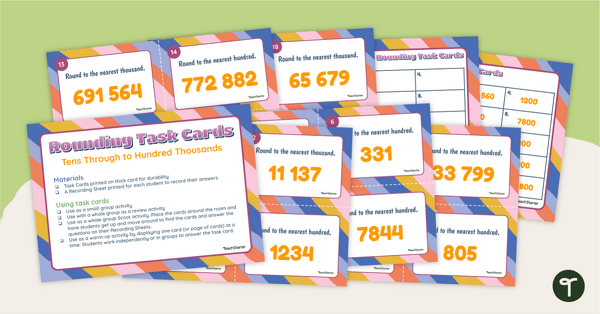
Rounding Task Cards
Use place value knowledge to round numbers to the nearest ten through to the nearest hundred thousand with this set of 20 task cards.
- Plus Plan
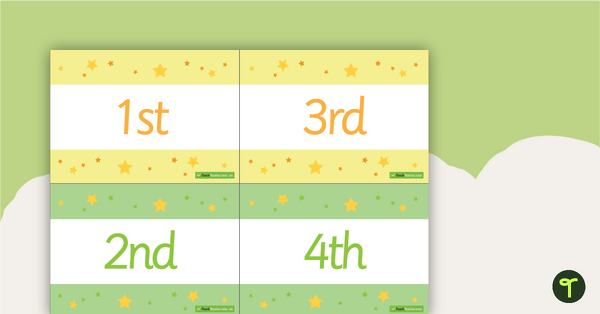
Ordinal Numbers Flashcards
Flash cards for ordinal numbers.
- Plus Plan
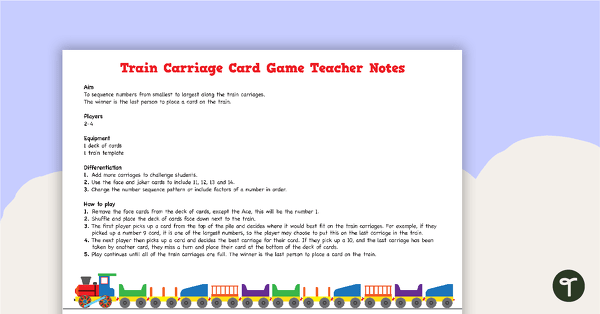
Train Carriage Card Game
Use the train and a deck of cards to consolidate students' knowledge of number sequencing.
- Plus Plan
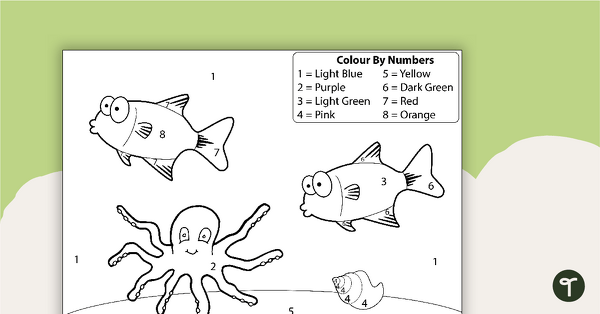
Underwater Colour By Numbers
Colour by numbers is a fun and easy way to help students recognise digits.
- Plus Plan
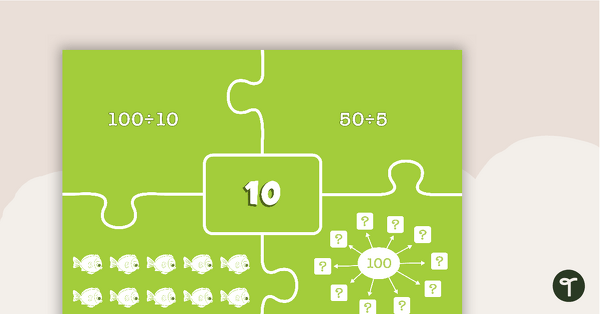
Number Matching Puzzle - Division
A hands-on game to play when learning about dividing numbers.
- Plus Plan
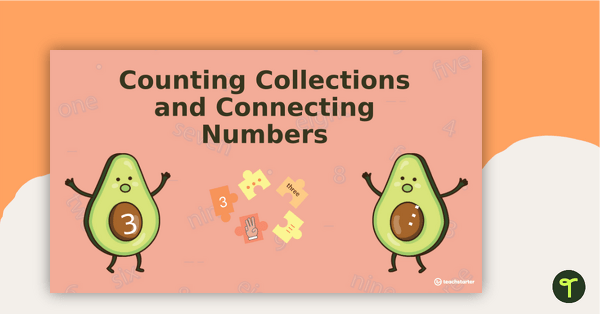
Counting Collections and Connecting Numbers PowerPoint
A 16 page editable PowerPoint presentation to use as part of a numeracy lesson when teaching place value to younger students.
- Plus Plan
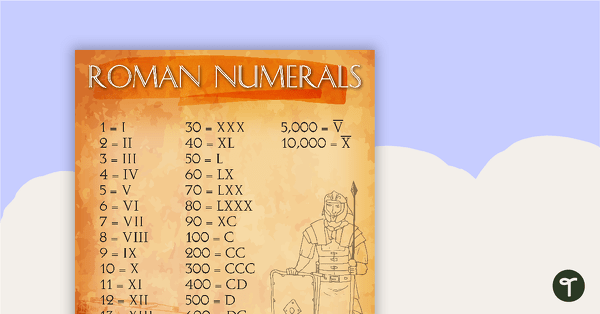
Roman Numeral Sign 1 - 10,000
Roman numerals can be difficult to learn and retain. Use this poster as a visual stimulus in your classroom.
- Plus Plan
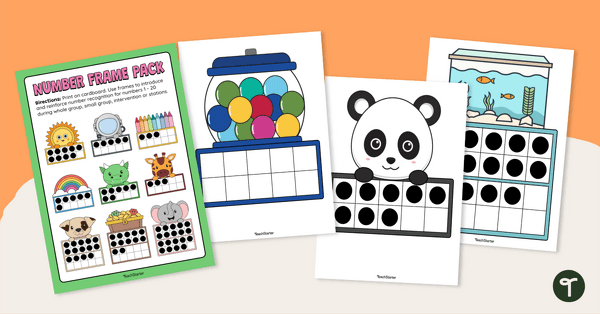
Ten Frame Variety Pack
Enliven your ten frame activities with this variety pack that contains both single and double ten frame templates.
- Plus Plan
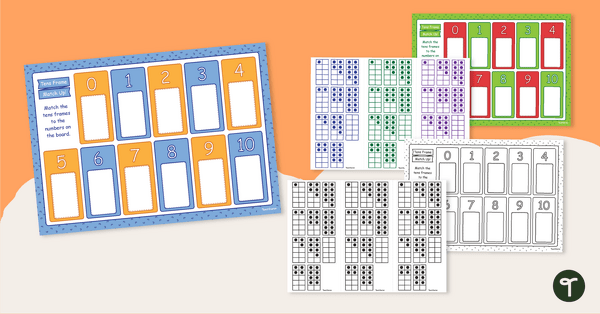
Ten Frame Matching Game
Use this ten frame game to strengthen your students’ number sense and foundational maths skills.
- Plus Plan
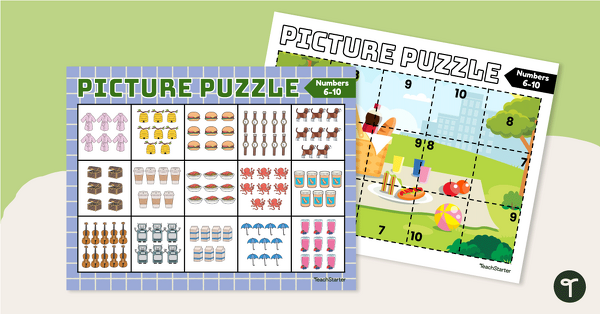
Counting Picture Puzzle Numbers 6-10
Practise counting 6 to 10 objects and matching groups to numbers through this 15-piece picnic scene picture puzzle
- Plus Plan
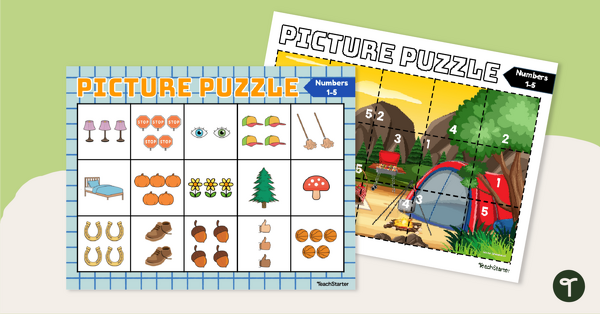
Counting Picture Puzzle Numbers 1-5
Practise counting objects within 5 and matching groups to numbers through this 15-piece camping scene picture puzzle
- Plus Plan
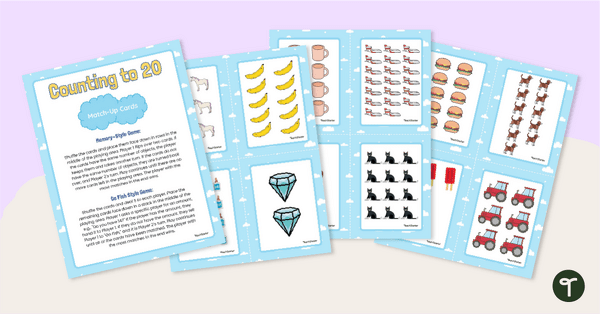
Counting to 20 Match-Up Cards
Count objects up to 20 with our match-up card game.
- Plus Plan
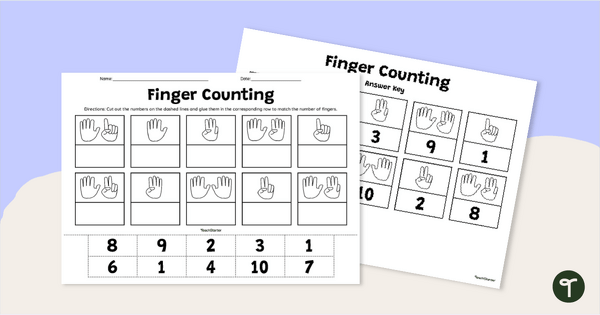
Finger Counting Cut and Paste
Count to ten using this finger counting cut and paste worksheet.
- Plus Plan
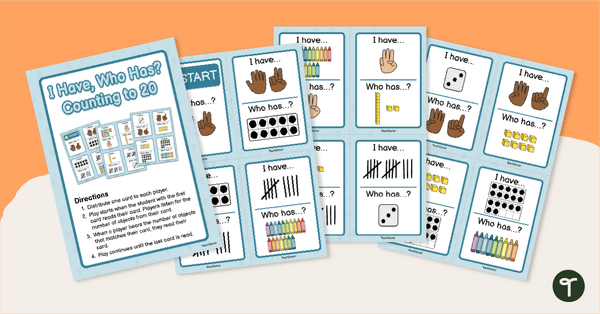
Counting to 20 I Have, Who Has? Card Game
Show student knowledge of counting to 20 with this fun I Have, Who Has? Counting Card Game.
- Plus Plan
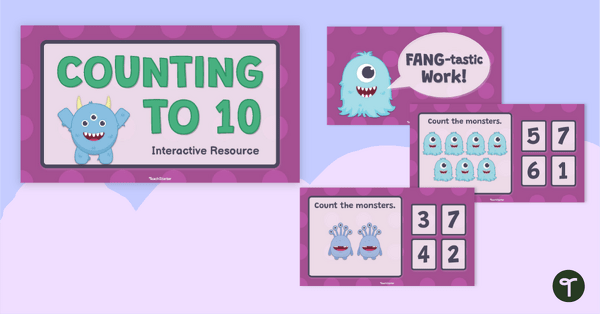
Counting to 10 Interactive Task Cards
Count groups of aliens up to 10 with this set of fun and engaging interactive counting task cards.
- Plus Plan
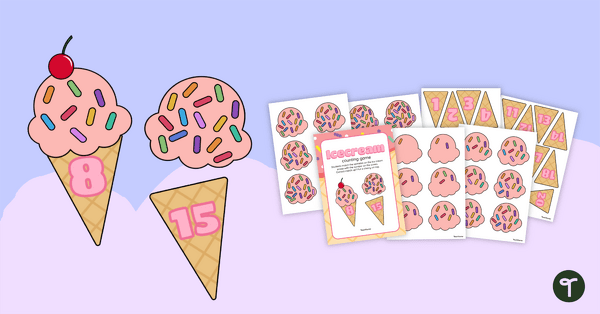
Ice Cream Counting Game
Help students practise their knowledge of counting numbers 1-20 with this fun ice cream matching game.
- Plus Plan
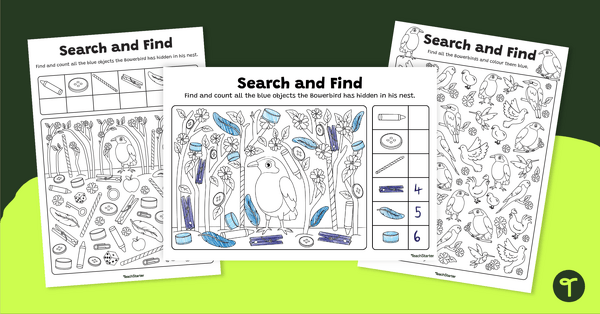
Search and Find Bowerbird Worksheets
Explore images to find and count objects for a bowerbirds nest and bowerbirds themselves.
- Free Plan
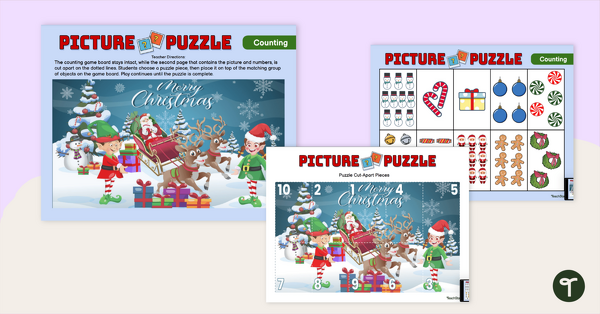
Christmas Maths Puzzle - Counting to 10
Count groups up to 10 with a printable Christmas maths puzzle.
- Plus Plan
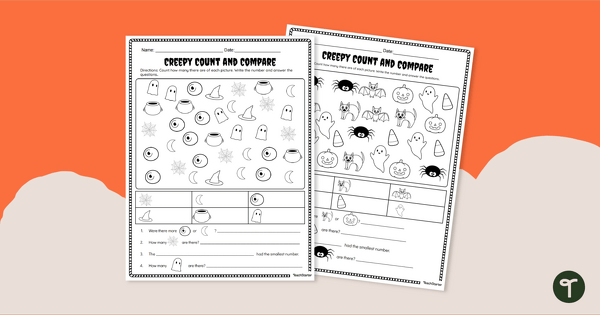
Comparing Numbers - Halloween Maths Worksheets
Comparing numbers just got a little creepier with exciting Halloween-themed kindergarten maths worksheet.
- Plus Plan
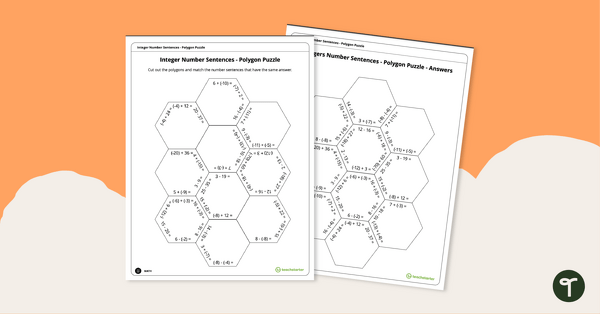
Adding and Subtracting Integers - Tarsia Puzzle
Practise adding and subtracting integers with a printable Tarsia puzzle!
- Plus Plan
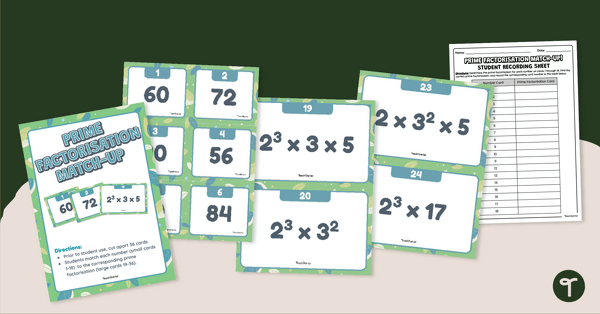
Prime Factorisation Match-Up
Practise how to find the prime factorisation of a number with this match-up activity.
- Plus Plan
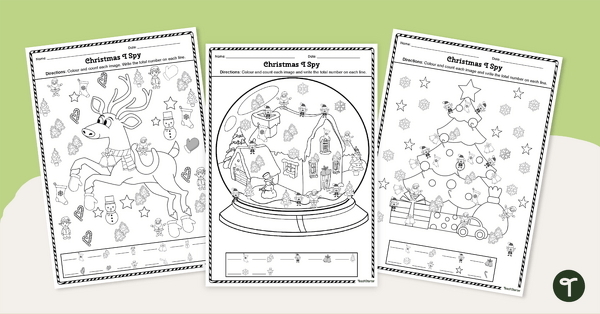
Christmas Printables – I Spy Worksheet Set
Find, colour and count the Christmas objects in these fun Christmas I Spy worksheets.
- Plus Plan
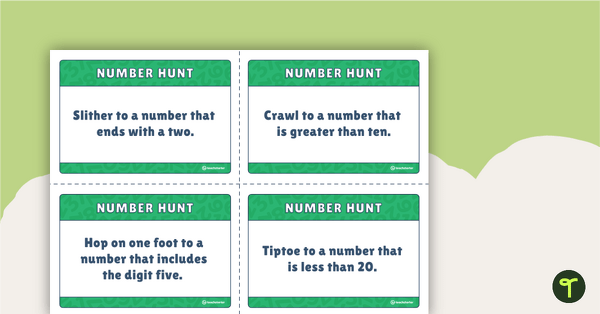
Number Hunt Description Cards
A set of 32 task cards that have students use their knowledge of place value to find specific numbers.
- Plus Plan
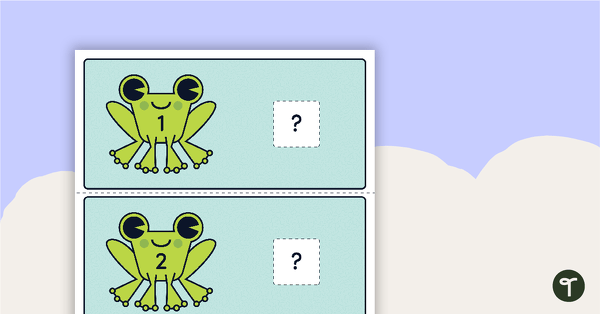
Numbers 1-12 Frog Catching Flies Activity
A hands-on activity where children consolidate their knowledge of numbers 1-12.
- Plus Plan
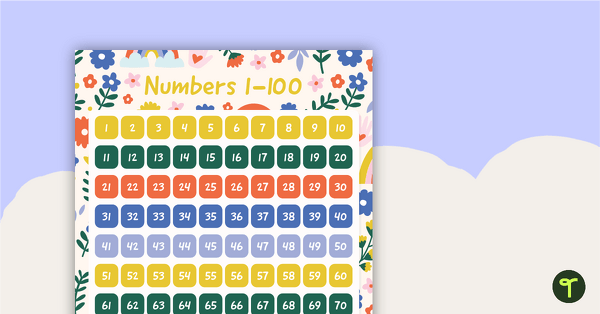
Affirmations – Numbers 1 to 100 Chart
Affirmations themed hundreds board.
- Plus Plan
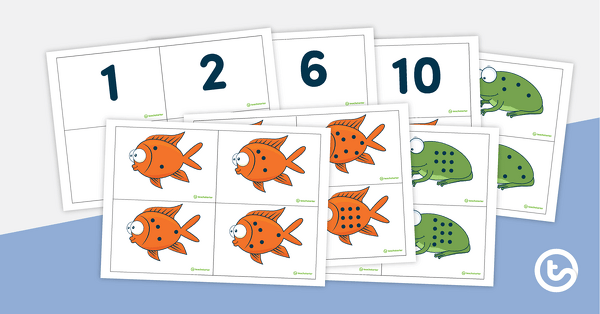
Spot the Dots Subitising Activity
Build number sense skills with these sets of cards.
- Plus Plan
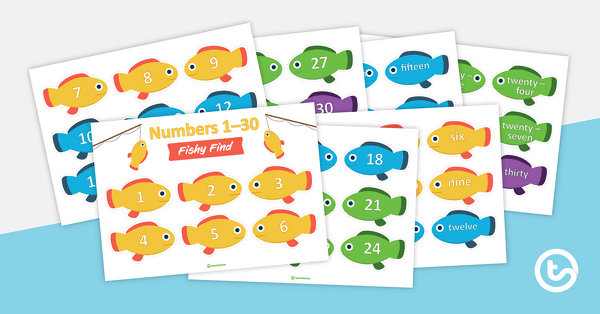
Number 1-30 Fishy Find Game
A set of 'fish' representing numbers 1-30 in numeral and word form.
- Plus Plan
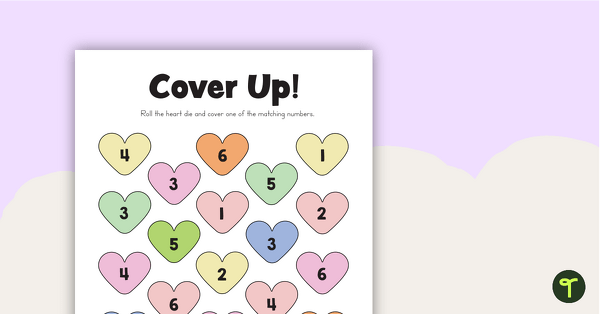
Cover Up! – Subitising Numbers Game
A game to practice subitising numbers 1–6.
- Plus Plan
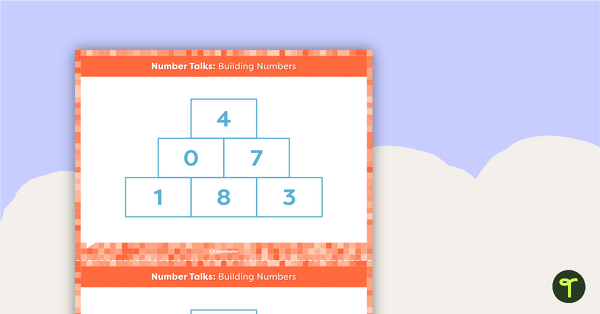
Number Talks - Building Numbers Task Cards
Build number sense skills with this set of 24 task cards.
- Free Plan
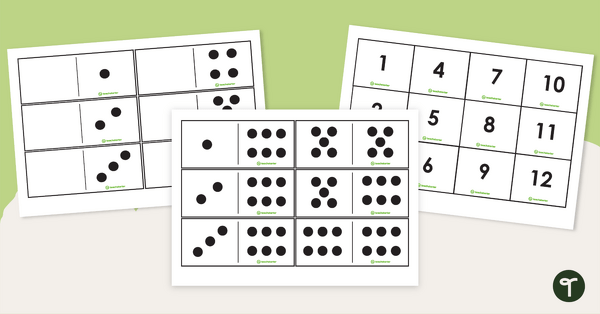
Subitising 1 to 12 - Domino Cards
A set of dominoes to use in the classroom when learning to subitise numbers from 1 to 12.
- Plus Plan
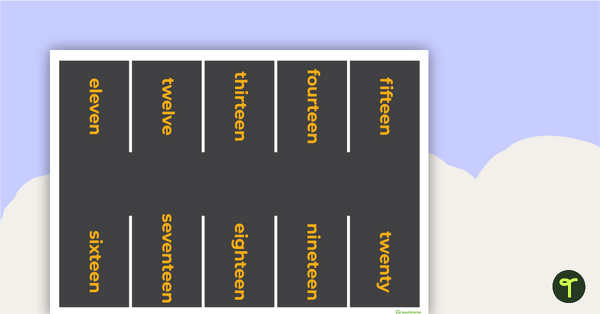
1 to 20 Car Park Number Match
A car park themed number matching activity to use in the classroom when identifying the numbers from 1 to 20.
- Plus Plan
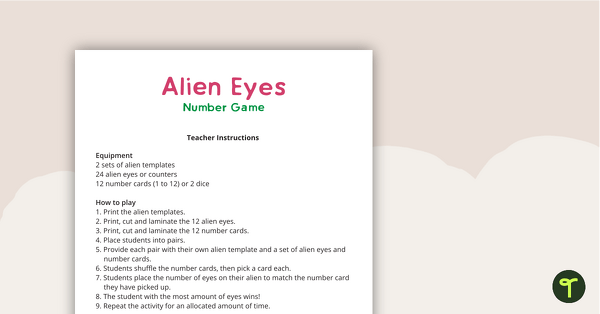
Alien Eyes - Number Game
A fun alien themed number game to help students identify the number from 1 to 12 and count small collections.